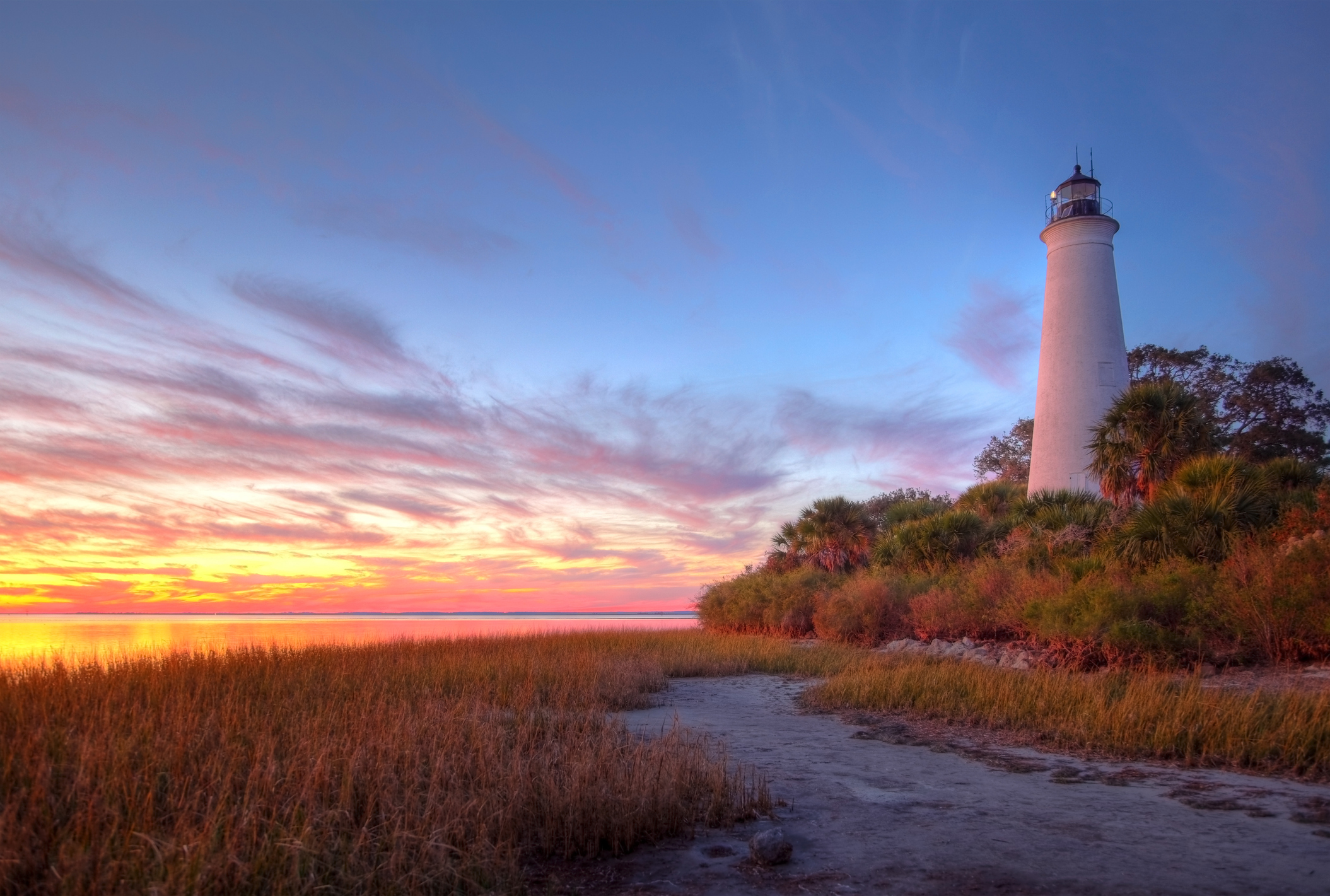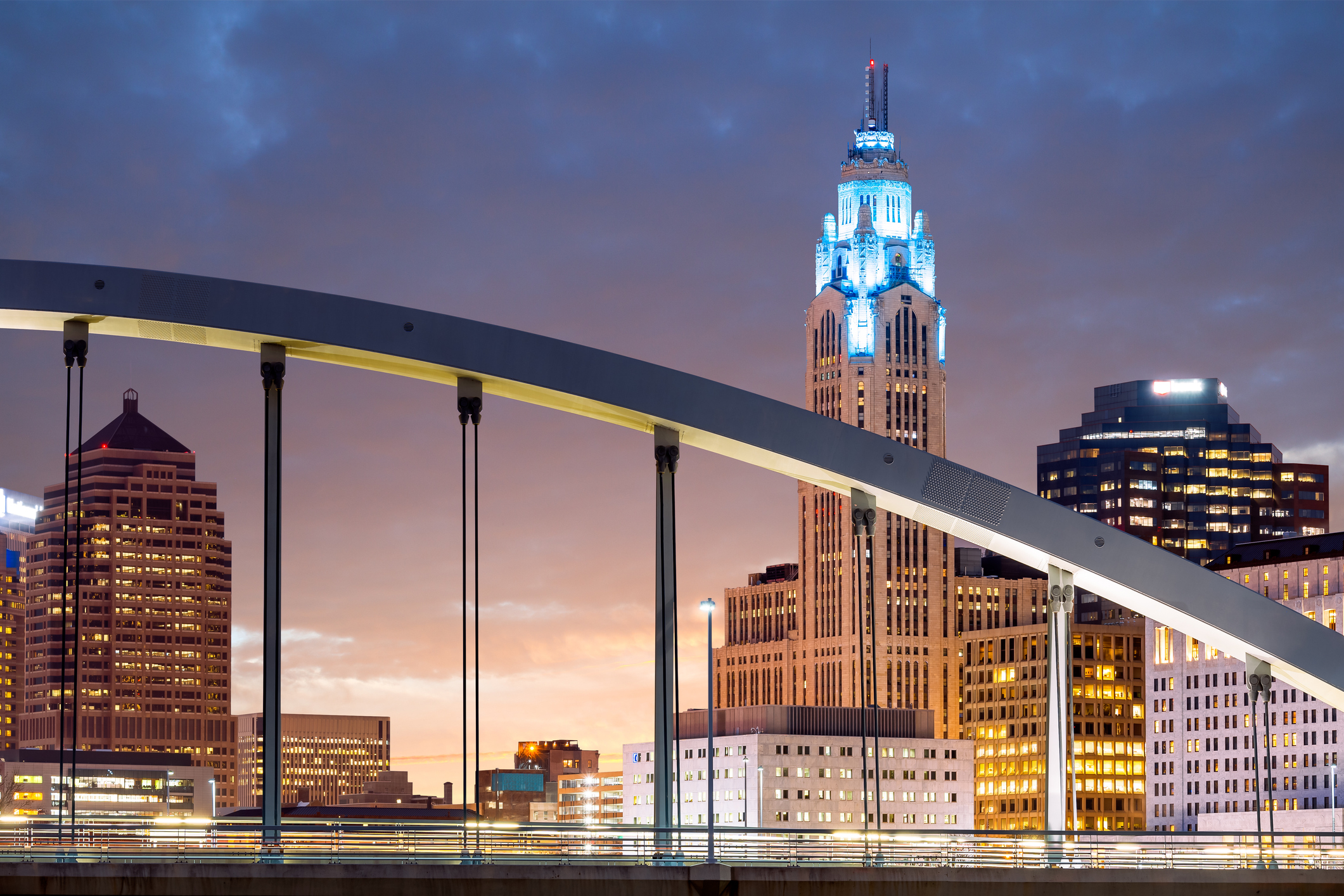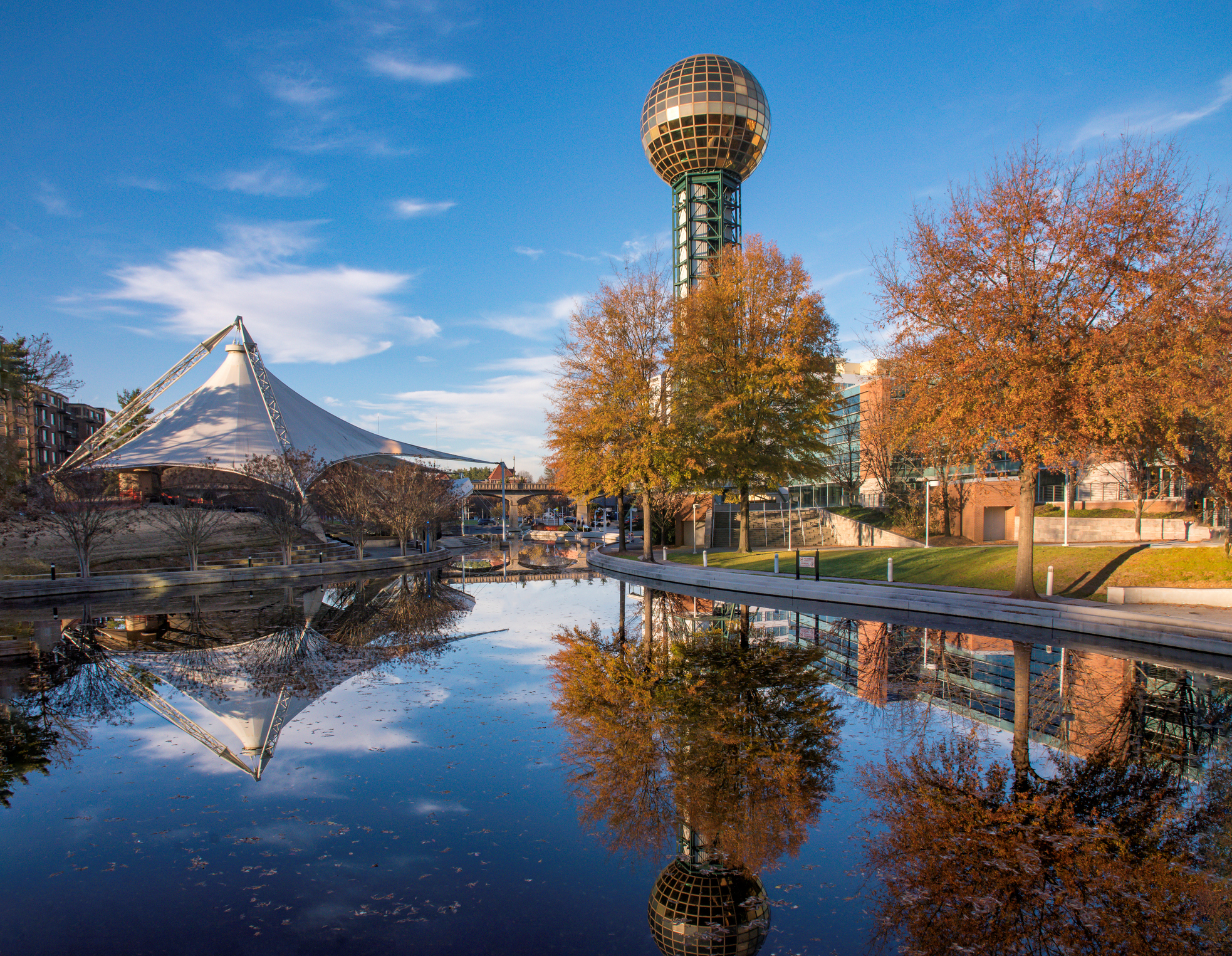
Take a look at these eight best places to retire for renters if you hope to save money on retirement housing costs. Retirees’ top criteria typically include access to good hospitals, proximity to family, and the overall cost of living, including taxes and the cost of buying a home.
But these days, with the state of the housing market, you may want to remove that last item from your checklist. For Q2 2025, the median price for a single-family home was $410,800, per the Federal Reserve Bank of St. Louis. That's a 3% decrease from Q1 2025, but a 1% decrease from Q2 2024 ($414,500).
Per Freddie Mac's Primary Mortgage Market Survey, as of July 24, 2025, the average 30-year fixed mortgage rate in the U.S. is 6.74%, and the 15-year fixed rate is 5.87%. That's down a bit from a peak of 7.04% in January 2025, but many housing market experts expect mortgage rates to remain stubbornly high, only easing gradually as we move through the rest of the year. Considering all this, renting may be a better choice for many retirees who want to relocate.
Criteria for the best places to retire for renters
Kiplinger’s has long recommended renting in a potential retirement destination before buying a house, and that advice is even more compelling now. We’ve selected eight cities that offer appealing options for renters, including quality hospitals and physicians, plenty of green space, and retiree-friendly amenities, such as free classes at local colleges and universities.
Because one factor high on retirees’ lists of where to relocate is proximity to family, we chose locations spread across the U.S. That means not all the cities on our list are in snow-free climates or income-tax-friendly states.
Renting vs buying
Even if you can afford to buy a home — perhaps with cash from the sale of your existing home — you may have a difficult time finding one that suits your needs. Many homeowners with fixed-rate mortgages of 3% or less are unwilling to sell, even if they’ve outgrown their homes. This has led to a shortage of homes for sale, particularly smaller houses that appeal to retirees downsizing. The existing home inventory currently stands at 1.45 million as of April 2025, up from a low of 1.14 million in January.
Rental demand has spiked in response to the lack of affordable housing. The median cost of renting rose nearly 30% between March 2020 and January 2024, according to data from Zillow.com. In January 2024, the median rent for all-bedroom rentals hit $1,959 per month. The median rent averaged around $1,964 per month for the year, per Zillow’s Observed Rent Index (ZORI).
Zumper’s May 2025 National Rent Report showed a median rent for all-bedroom rentals of $2,000 per month. That number is up slightly (a 1.8% increase) from 2024’s $1,964 average. Zillow’s ZORI report further estimated a median of $1,987 per month, which reflects a 2.2% year-over-year increase.
A boom in real estate development in Sunbelt cities has led to an oversupply of rental properties and an increase in vacancies, says Jay Lybik, national director of multifamily analytics for CoStar Group, which provides data to the commercial real estate industry and is the parent company of Apartments.com.
The value of flexibility
Perhaps the main reason to rent, at least initially, is that it’s a lot easier to change your mind. “Even the most desirable cities are going to have less-than-desirable areas,” says Nick Lyons, a certified financial planner with the Goff Financial Group in Houston. “Rather than buying a new home and incurring all of that up-front cost, renting will give some mobility and flexibility to assess whether you like that area.”
Although you may not have lived in an apartment since you were just out of college and didn’t mind sleeping on a futon, apartment living offers many benefits for retirees. Apartment complexes are often close to community centers and within walking distance of restaurants and other attractions, says Michelle Polowy, a senior content marketing associate with Zumper. Many also offer amenities that are attractive to retirees, such as swimming pools and fitness centers.
Lybik recently toured a new apartment complex in Phoenix that featured a craft room with storage space and room for residents to work on their projects. “One thing crafters need is space,” says Lybik, adding that his wife is a crafter.
If you’d prefer living in a house, the proliferation of homes available through Airbnb, VRBO, and other short-term rental services provides plenty of options for retirees who want to rent. Some of these property owners may be delighted to negotiate a long-term rental arrangement, particularly with retirees who are unlikely to leave the premises in disarray when they move out.
Low maintenance
With inflation still a concern, owning a home with a fixed-rate mortgage — or better yet, one with a paid-off mortgage — offers retirees significant comfort. A mortgage, or lack of one, is only one cost of homeownership. Homeowners must also pay homeowners insurance, property taxes, and the cost of maintenance and repairs, all of which are subject to increases.
Renting could offer some tax benefits as well. Lyons recently met with a client who was considering withdrawing $300,000 from her IRA to buy a home near family in Wyoming. He cautioned that such a large withdrawal would trigger a significant tax bill, because withdrawals from tax-deferred accounts are taxed as ordinary income. The client decided to rent instead. And because her destination is a popular tourist area, there are plenty of vacation homes available for renters, Lyons adds.
Many retirees who are interested in downsizing use the proceeds from the sale of their home to purchase a retirement home. That arrangement is tax-friendly, since proceeds from the sale of a primary residence up to $250,000, or $500,000 for a married couple who file jointly, are tax-free as long as you’ve owned and lived in the home for at least two out of the past five years. (Any excess is taxed at long-term capital gains rates, which can range from 0% to 23.8%, depending on your taxable income).
But even in a seller’s market, selling your home takes time. By renting, you can keep your home on the market until you get the price you want, without having to dip into your retirement savings to buy a new home, Lyons says.
Where to rent
Just as the cost to buy a single-family home varies dramatically across the country, so does the cost of renting. RentCafe, an apartment listing service, cataloged the square footage you can get for $1,500 a month in 2024. Not surprisingly, Manhattan was at the bottom of the list: $1,500 will pay for just 228 square feet — basically a walk-in closet. That amount of money will buy you only slightly more space in Boston (315 square feet) or San Francisco (334 square feet), RentCafe found. But head to the Midwest or the South, and $1,500 will get you more than three times as much space: more than 1,359 square feet in Wichita, for example, or $1,224 in Fayetteville, N.C.
The typical monthly rent for two-bedroom apartments in our eight cities ranges from about $1,023 a month (in Birmingham) to $1,695 a month (in Knoxville), according to data provided by online real estate marketplace Zillow. Following the cost of housing, it makes sense that rents are lower in the South and Midwest than on the East and West coasts.
In addition to the criteria described above, we used data from Zumper, Zillow, and some of Kiplinger’s research to identify cities that are attractive for retirees who want to rent. In some high-cost cities such as Spokane, average monthly rents are considerably lower than the cost of a mortgage payment for a typical single-family home, according to data provided by Zillow; in others, the difference is marginal.
But even when a monthly mortgage payment is significantly lower than typical rent payments, as is the case with Birmingham, you may still want to rent initially before deciding to buy. Zillow’s rental data includes apartments and homes. (If you limit your search to apartments and condos, your monthly payments may be lower than shown for our cities).
Give our cities a look, but keep in mind that when you’re a renter, the world is your oyster. Renting offers the opportunity to live for a year or two in a city that may otherwise be unaffordable. And if you decide Tallahassee is too rainy — or summers in Birmingham are too humid — you can move.
Buying a home still makes sense if you know you’re going to stay in it for the long term — say, five years or more — says Andy Baxley, a CFP in Chicago. But retirees who aren’t sure they’ll stay in one place that long, he adds, “can benefit tremendously from the flexibility of renting.”
Tallahassee, FL

- Population: 205,079
- Cost of living: 91.2% (11.5% below U.S. average)
- Typical monthly mortgage payment: $2,119 ($2,715/month, U.S. average)
- Typical monthly rent: $1,790
- Number of hospitals within 25 miles: 4
- What retirees love: Beaches, warm weather and low taxes
Located midway between the Georgia border and the Gulf of Mexico coastline of the state’s panhandle, Florida’s capital city attracts retirees seeking warm weather and low taxes.
Tallahassee is surrounded by lush wildlife reserves, including St. Marks National Wildlife Refuge, a sprawling ecosystem of estuaries, coastal marshes, and islands located about 20 miles from the city. The St. Marks Lighthouse, the second oldest lighthouse in Florida, is one of the most-photographed landmarks on the Gulf Coast.
Cyclists can enjoy hundreds of miles of trails, including the hard-packed clay trails of Munson Hills Mountain Bike Trail System, which wind through the woods. The biking trails are part of a growing network of nature trails in Greater Tallahassee used by walkers, joggers, and bikers.
Retirees interested in expanding their intellectual horizons, engaging in social activities, and volunteering can take advantage of the Osher Lifelong Learning Institute at Florida State University. The program offers nearly 100 classes annually, and a variety of cultural and social activities for adults aged 50 and older. Faculty at Florida A&M University, one of the nation’s largest and oldest historically black universities, also teach some of the courses at the Osher Institute and offer community engagement programs of their own.
The going-out scene often revolves around the FSU football schedule. However, you can escape college crowds at restaurants such as Sage, which features New American cuisine, or by sampling the extensive catalog of cocktails and spirits at Bar 1903, inside the restored Walker Library Building.
A two-bedroom apartment near upscale shopping in midtown Tallahassee rents for about $1,790 a month. The market has warmed in recent months, with average rents up by $21 year-over-year.
Florida does not have state income tax, so income from pensions, Social Security, and retirement plans is tax-free. It is also one of the states with no estate or inheritance taxes. The combined state and local sales tax is 7.5%.
Birmingham, AL

- Population: 194,156.
- Cost of living: 87 (13% below U.S. average)
- Typical monthly mortgage payment: $1,534
- Typical monthly rent: $1,430
- Number of hospitals within 25 miles: 13
- What retirees love: Opportunities to get outside in one of the many State parks
Centrally located in America’s Southeast and rich with culture and history, Birmingham offers retirees a little bit of everything. On Fourth Avenue North in the city’s center is the country’s oldest black business district, a “huge part of the emergence of Birmingham” and the history of the civil rights movement, says Karla Khodanian of the Birmingham Chamber of Commerce. On the weekends, the Pepper Place Farmers Market fills with foot traffic, as local farmers and small businesses set up shop against the backdrop of the city’s Sloss furnaces, long used for manufacturing pig iron and now a historic landmark.
Festivals of all kinds are a regular occurrence in and around the city, including food festivals in the fall as well as the beloved annual Sidewalk Film Festival, which has been attracting crowds of moviegoers the last weekend of August for nearly 20 years.
The Alabama Symphony Orchestra offers free shows at a park downtown throughout the summer. Birmingham’s Museum of Art is free and open to the public six days a week. Just a few steps from the museum, you’ll find the newly developed Legacy Arena, which hosts everything from basketball games to dance competitions.
Retirees seeking outdoor recreation will find plenty of choices. Red Mountain Park, Ruffner Mountain, and Oak Mountain State Park are popular spots for trail runners, hikers, and bikers. Just across the way, locals can also enjoy City Walk, an urban park built underneath the raised interstate.
Birmingham has some of the lowest housing costs in the U.S., so you’ll pay more to rent than you’d pay for a mortgage. Nonetheless, renting in Birmingham could be a good way to get a sense of life there before ultimately buying a home. You can rent a two-bedroom loft in downtown Birmingham for about $1,915 a month.
There are 13 hospitals within 25 miles of Birmingham, including St. Vincent’s Birmingham, a 409-bed acute-care hospital offering a state-of-the-art robotics surgery program. The hospital specializes in oncology, cardiology, orthopedics/sports medicine and neurology.
Alabama treats retirees kindly when it comes to taxes. The state income tax ranges from 2% to 5%, and there is no estate or inheritance tax. Social Security benefits, income from federal and military retirement plans, and income from defined benefit pension plans are tax-exempt.
However, the average combined state and local sales tax rate is a hefty 9.24%. It is one of 13 states that taxes groceries. If you eventually become a homeowner, Alabama has the second-lowest median property tax rate in the country.
Raleigh, NC

- Population: 493,589
- Cost of living: 105.8 (5.8% higher than the U.S. average)
- Typical monthly mortgage payment: $2,194
- Typical monthly rent: $2,350
- Number of hospitals within 25 miles: 11
- What retirees love: Opportunities to discover arts and culture
Raleigh, the capital of North Carolina, is filled with arts, culture, entertainment, restaurants, museums and festivals. A bonus is the proximity to Durham and Chapel Hill and the benefits of having three major universities — North Carolina State in Raleigh, Duke University in Durham, and the University of North Carolina at Chapel Hill — all within 30 miles of one another.
This area, known as the Triangle region, includes the three distinct cities, each with its own character and identity, but with benefits that are easily accessible wherever you live.
Known as the “City of Oaks,” Raleigh’s moderate temperatures make it easy to enjoy outdoor activities all year long. More than 100 miles of paved trails connect neighborhoods and attractions, such as the 6-mile Art to Heart trail. A special feature is the Ann and Jim Goodnight Museum Park, a paved trail lined with more than a dozen works of art.
The North Carolina Museum of Natural Sciences, the Southeast’s largest natural history museum, features interactive exhibits the grandkids will love. The Gregg Museum of Art & Design, on the campus of NC State, hosts regular lectures, film screenings, workshops and yoga.
The thriving restaurant scene offers much more than iconic North Carolina barbecue (which features pork and vinegar and is delicious). Zagat named Raleigh one of the hottest food cities, and local chefs are achieving national fame, including Ashley Christensen, who runs six restaurants in Raleigh and received the Outstanding Chef award from the James Beard Foundation.
Excellent healthcare is a major draw for the area, with Duke University Hospital consistently ranked among the top hospitals in the country. The UNC Hospitals are also highly ranked.
Raleigh is home to 10 colleges, including NC State, which helps keep the rental market active, but prices high. You can rent a one-bedroom apartment in a new building in the trendy Glenwood South neighborhood in downtown Raleigh for anywhere from around $1,400 to $2,300.
North Carolina’s income tax rate dropped from a flat tax of 4.25% in 2025 and will continue to decrease each year until it hits 3.99% in 2027. Social Security benefits are not taxed, and income from federal government retirement plans or designated North Carolina state and local government plans is exempt if the retiree had five or more years of creditable service as of August 12, 1989.
Athens, GA

- Population: 129,550
- Cost of living: 87.6 (12.4% below the U.S. average)
- Typical monthly mortgage payment: $1,514
- Typical monthly rent: $1,650
- Number of hospitals within 25 miles: 3
- What retirees love: Close proximity to downtown Atlanta
Downtown Athens is about 70 miles northeast of downtown Atlanta and has ready access to a thriving music and arts scene. And Pittsfield offers a lower cost of living than pricey neighboring towns.
Athens' downtown cultural district features the Classic Center, which hosts plays, musicals, and live performances.
Outdoors enthusiasts will enjoy the ADA-accessible paths at the Sandy Creek Nature Center. You can also fish, canoe, kayak, and use the boat launch to enjoy the day on Lake Chapman. There is space for you and your canine to play ball. Sandy Creek has one public dog park, plus five private dog parks available to rent for just $1 per dog per hour.
For the young at heart, Athens has a lively nightlife and music scene. You can enjoy craft brews on the Athens Beer Trail to discover great beer and new friends. Athens has one of the strongest music cultures and histories throughout the entire country. It was an important part of the early evolution of alternative rock and new wave, such as R.E.M. and The B-52s. Music venues, including the 40 Watt Club and Georgia Theatre, are still mainstays for live music.
The average rent of $1,500 for a 2-bedroom home in Athens is below the national average of $1,578. Retirees can rent a more than 1,000-square-foot home with two bedrooms and bathrooms in the vibrant downtown for $1,710 to $1,730 at Classic City Flats, a brand-new luxury apartment community. The community has everything from pool cabanas to pickleball courts.
Access Oconee Forest Park and the 313-acre State Botanical Garden of Georgia through the University of Georgia campus. The Georgia Museum of Art, also located on the campus of UGA, offers yoga classes in the galleries and invites community members to train as docents.
There are three hospitals located within 25 miles of Downtown Athens. Piedmont Athens Regional Medical Center in Athens is a 427-bed hospital with a Level II trauma center, an American College of Surgeons Commission on Cancer-approved oncology department, and a nationally recognized cardiovascular program.
Georgia has a flat income tax rate of 5.29%. From 2025 to 2029, the rate will gradually be reduced to 4.99% if certain economic targets are met. There are no estate or inheritance taxes in Georgia.
Columbus, OH

- Population: 917,679
- Cost of living: 91.4% (8.6% below U.S. average)
- Typical monthly mortgage payment: $1,829
- Typical monthly rent: $1,487
- Number of hospitals within 25 miles: 9
- What retirees love: Top-notch healthcare
Columbus is the home of Ohio State University, but Ohio’s capital city has a lot to offer retirees, even if they’re not fans of Buckeye football or basketball. The university provides plenty of music and theater, and Ohio State’s lifelong learning program, Program60, offers tuition-free, non-degree programs for seniors age 60 and older.
Throughout the year, the city features numerous festivals, including the Holiday Blooms festival in the winter and the Fiery Foods Festival in the summer.
The Clear Creek Metro-park has 5,300 acres for hiking, and bikers can get their workout on the Heron Pond Trail. The Franklin Park Conservatory and Botanical Gardens, about two miles from downtown Columbus, is a sprawling 88-acre area featuring more than 400 species of plants. The conservatory hosts exhibitions throughout the year and offers classes and workshops in cooking, gardening, fine arts, and wellness.
Although prices for homes in Columbus are lower than in many other parts of the U.S., the city is still in the midst of a seller’s market, with a limited inventory of homes, says Donald Payne, a local real estate agent. You can rent a three-bedroom apartment for between $1,1200 to $1,800. Here, too, though, there is strong demand, Payne says, so if you find an apartment you like, move quickly to nail down a lease. Seniors who prefer urban living may consider renting in downtown Columbus, a walkable neighborhood that features a variety of restaurants, shops, and entertainment venues.
Thanks to the university, health care in Columbus is top-notch. The Ohio State University Wexner Medical Center is ranked as one of the best hospitals in the U.S., with nine health care specialties.
Ohio’s income tax ranges from 2.75% on income from $26,051 to $100,000, to 3.5% on income over $100,00. Tax breaks for seniors include a retirement income tax credit ranging from $25 to $200, depending on the amount of qualifying income you receive from a pension or retirement plan.
In addition, taxpayers who are age 65 and older can claim a senior citizen credit of up to $50 per tax return. Ohio doesn’t tax Social Security benefits.
Knoxville, TN

- Population: 202,639
- Cost of living: 91.8% (8.2% below U.S. average)
- Typical monthly mortgage payment: $2,557
- Typical monthly rent: $1,943
- Number of hospitals within 25 miles: 6
- What retirees love: A low cost of living and no state income tax
Many retirees are pleasantly surprised to learn that retiring in Knoxville makes strong financial sense. The cost of living is 14.1% below the national average, which means you’ll save money on things like housing, groceries, transportation, and recreational activities.
There is no state income tax in Tennessee and no estate tax or inheritance tax. The statewide sales tax is 7%, and localities can tack on another 2.75%. Unlike many other states, there is a sales tax on prescription drugs and groceries.
Knoxville benefits from a climate that usually doesn’t get too hot or cold. The summer temperatures typically stay in the 80s, while the winter highs usually don’t fall below 45 degrees. On average, the area receives less than a foot of snow every year, which means it’s comfortable to stay active almost year-round.
Knoxville offers plenty of outdoor activities and opportunities to get lost in nature. It is surrounded by seven lakes and sits along the Tennessee River. Close to downtown Knoxville, the Ijams Nature Center provides a beautiful urban retreat that is ideal for long, quiet strolls. A few miles farther east, Seven Islands State Birding Park is a favorite spot for river fishing, hiking, biking, and spotting an incredible variety of birds.
There are places to live that will amplify your enjoyment of the mild temperatures and outdoor activities Knoxville offers. The Fox Lake apartments in West Knoxville offer two- and three-bedroom floor plans that cost from about $1,500 to $1,800. Fox Lake's most outstanding features are the on-site 10-acre nature preserve, jogging trails, and 2-acre spring-fed lake stocked with fish.
The Great Smoky Mountains National Park and Cumberland Gap National Historical Park are just outside of Knoxville, enticing day trippers with countless opportunities for a peaceful drive, hikes with friends and family, or a quiet picnic.
Culture lovers can’t get enough of Knoxville’s arts scene. In the summer, the historic Market Square District plays host to outdoor music events and Shakespearean plays. Meanwhile, the Tennessee Theatre, the Bijou Theatre, and the Knoxville Symphony attract crowds year-round.
For retirees who love sports, Knoxville has plenty to offer, including the Southern Professional Hockey League’s Ice Bears team, minor league baseball’s Tennessee Smokies, and the University of Tennessee Volunteers football and basketball teams, all of which have extremely loyal fan bases.
High-quality medical care is conveniently located throughout Knoxville. The city is home to six major hospital networks, providing residents with plenty of choices for both primary and specialty care. The University of Tennessee Medical Center is the home of the Knoxville campus of the University of Tennessee Graduate School of Medicine and the UT College of Pharmacy. The 710-bed teaching hospital is also home to the region's only dedicated heart hospital, only adult transplant center, and the region's first certified comprehensive stroke center. The city also has a strong network of senior resources, including plenty of options for those who require memory care.
Spokane, WA

- Population: 229,608
- Cost of living: 103.1 (3.1% higher than the U.S. average)
- Typical monthly mortgage payment: $2,715
- Typical monthly rent: $1,450
- Number of hospitals within 25 miles: 9
- What retirees love: The overall quality of life
Retirees embrace Spokane for its relatively affordable cost of living compared with other major cities in the Pacific Northwest, top-notch health care, and overall quality of life.
Retirees can enjoy fishing, boating, golfing, and hiking in the alpine landscapes surrounding Spokane in the warmer months and downhill skiing, snowboarding, cross-country skiing, and snowshoeing in the winter. Situated near the Spokane River, in eastern Washington, the city itself also features numerous parks, trails, and other outdoor recreation opportunities. Riverside State Park, just 9 miles from downtown Spokane, features the 40-mile paved Centennial Trail, which ends in Coeur d’Alene, Idaho.
Spokane is home to a vibrant arts and culinary scene. Many murals can be found on building walls, painted by local artists throughout the city. The city’s three-day Art Fest, held every June, features sculpture, photography, ceramics, jewelry and more, with all sales going directly to the artists. Spokane has a wide range of restaurants and eateries catering to different tastes and preferences. Clover and The Wandering Table, for example, have received acclaim for their innovative cuisine.
With typical rents of two-bedroom apartments at $1,350, retirees can enjoy a comfortable lifestyle for much less than the cost of a monthly mortgage. The rental options are also eclectic in downtown Spokane and Spokane Valley, including apartments, townhouses, single-family homes, and senior living facilities. A two-bedroom apartment in a downtown apartment complex with a rooftop lounge deck rents for about $2,000 to $2,500.
Retirees have nine hospitals to choose from within a 25-mile radius, including such well-regarded facilities as Providence Sacred Heart Medical Center. The hospital has more than 800 primary care doctors and specialists who focus on areas including cancer treatment and heart and vascular health.
Washington doesn’t have an income tax, so you won’t pay state taxes on withdrawals from your retirement plans, pension payments, or Social Security benefits. However, Washington State now has a capital gains tax. Residents will pay 7% on the sale or exchange of individual long-term capital assets (e.g., stocks, bonds, business interests, etc.) that exceed $250,000.
Spokane has a combined state and local sales tax of 9%, and tax on gasoline, at $0.49 per gallon, is one of the highest levies in the U.S. Washington also taxes estates valued at $2.193 million and up at rates ranging from 10% to 20%.
San Antonio, TX

- Population: 1,532,653
- Cost of living: 91.3% (8.7% below U.S. average)
- Typical monthly mortgage payment: $1,700
- Typical monthly rent: $1,695
- Number of hospitals within 25 miles: 17
- What retirees love: Big-city amenities
San Antonio has everything you’d want in a city, just without the crowds or high price tag. With a population of just over 1.4 million, San Antonio has all of the big-city amenities — including tons of restaurants, shopping, arts, and entertainment — but its geography, history, and intentional use of outdoor space make it feel smaller.
San Antonio’s climate is perfect for year-round outdoor activities. You’ll find walking, hiking, biking, and even paddling trails throughout the city.
Renters have plenty of options in and outside the city. A one-bedroom apartment near the recently renovated Pearl Brewery rents for about $2,200 per month. In the Stone Oak and Medical District north of San Antonio, you can find two-bedroom apartments for around $1,800 a month.
The 15-mile River Walk, created in the 1940s, continues to expand and provide access to more areas of the city, extending north to the 343-acre Brackenridge Park and south to San Antonio’s five Spanish Colonial missions, including the Alamo.
San Antonio’s entertainment options include the Majestic Theater, built in 1929; the Tobin Center for the Performing Arts for ballet, musicals, and concerts; and many other smaller venues throughout the area.
San Antonio is known for its food, which combines its European and Mexican heritage, and was one of only two cities in the U.S. — and only 36 in the world — to be named a UNESCO Creative City of Gastronomy, an international culinary destination.
San Antonio also has big-city amusements, including Six Flags Fiesta Texas and SeaWorld. You can cheer on the San Antonio Spurs NBA basketball team, the San Antonio Missions baseball team, which is the AA affiliate of the San Diego Padres, and the San Antonio FC professional soccer team.
Known as “Military City USA,” San Antonio is home to one of the largest concentrations of military bases in the U.S. The bases provide a center of activity for service members and military retirees, who can shop tax-free at the Exchange and Commissary. If you're trying to find the best retirement community for you, know that several retirement communities cater primarily to military retirees.
San Antonio has world-class healthcare for both military and civilians. It is the home of the U.S. Army Medical Command and Brooke Army Medical Center, the Army’s flagship medical institution, a Level 1 trauma center. The city’s other Level 1 trauma center, the University of Texas Health Science Center at San Antonio, includes a 716-bed hospital and is the primary teaching facility for UT Health San Antonio.
Texas has no income tax, so retirement income is tax-free. It also has no estate or inheritance taxes.
Note: This item first appeared in Kiplinger's Personal Finance Magazine, a monthly, trustworthy source of advice and guidance. Subscribe to help you make more money and keep more of the money you make here.







